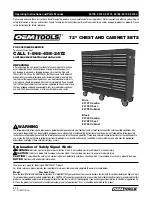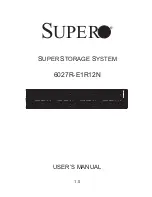
SATA II RAID Subsystem
22
User Manual
6. Environment Status LEDs
7. Disk Tray
8. Tray Latch
Parts
Function
Power LED
Green LED indicates power is ON.
Power Fail LED
If a redundant power supply unit fails, this
LED will turn to RED and alarm will sound.
Fan Fail LED
When a fan fails or the fan’s rotational speed
is below 700RPM, this LED will turn red and
an alarm will sound.
Over Temperature LED
If temperature irregularities in the system
occurs (HDD slot temperature over 65°C),
this LED will turn RED and alarm will sound.
Voltage Warning LED
An alarm will sound warning of a voltage
abnormality and this LED will turn red.
Tray Latch
Summary of Contents for iS16U3
Page 1: ...SATA II RAID Subsystem User Manual Revision 1 0 ...
Page 38: ...SATA II RAID Subsystem 38 User Manual ...
Page 39: ...SATA II RAID Subsystem User Manual 39 ...
Page 40: ...SATA II RAID Subsystem 40 User Manual ...
Page 41: ...SATA II RAID Subsystem User Manual 41 ...
















































